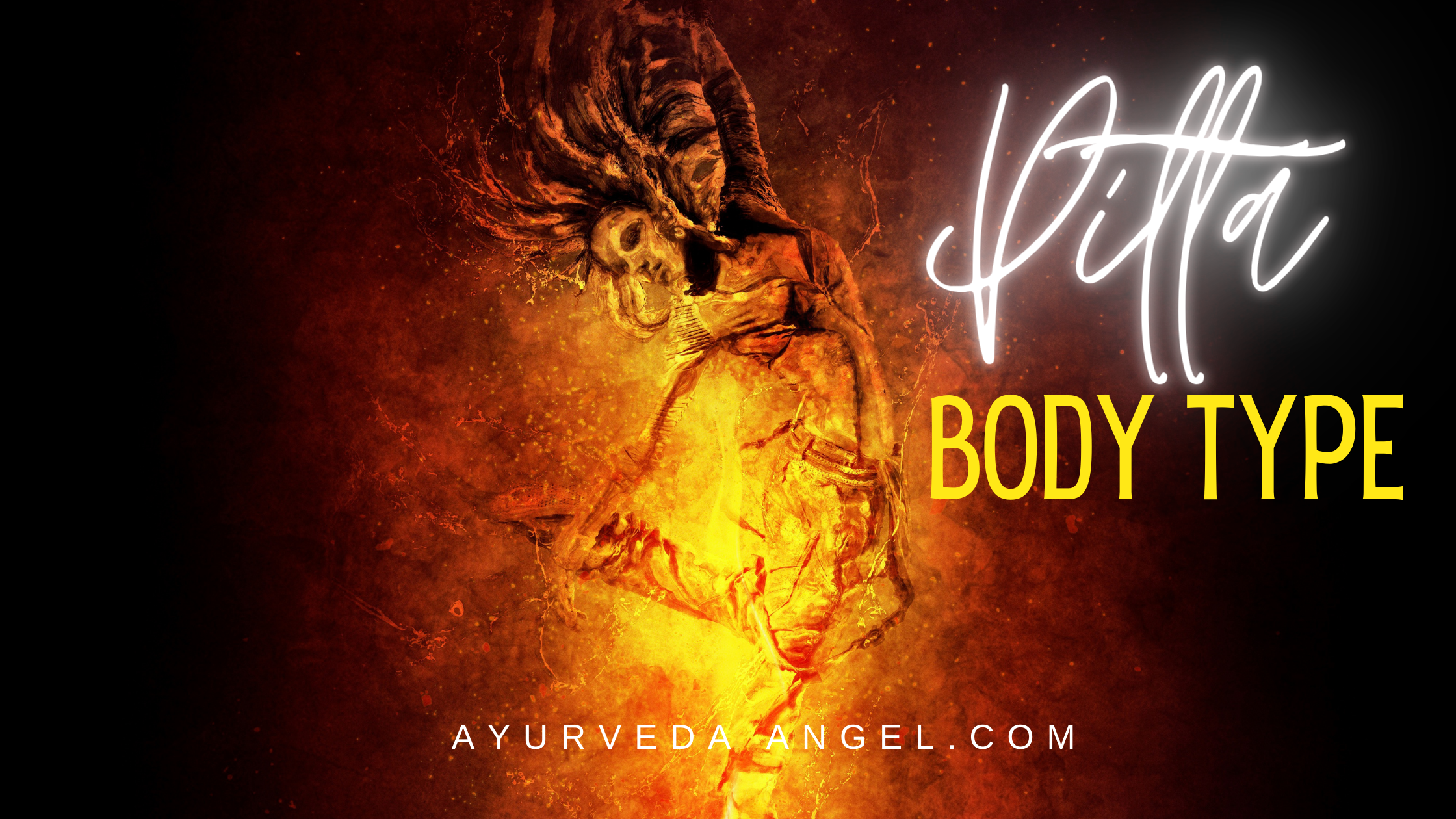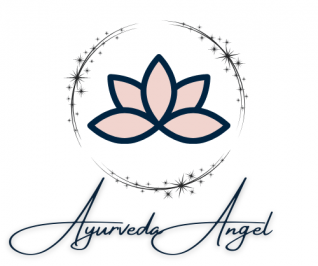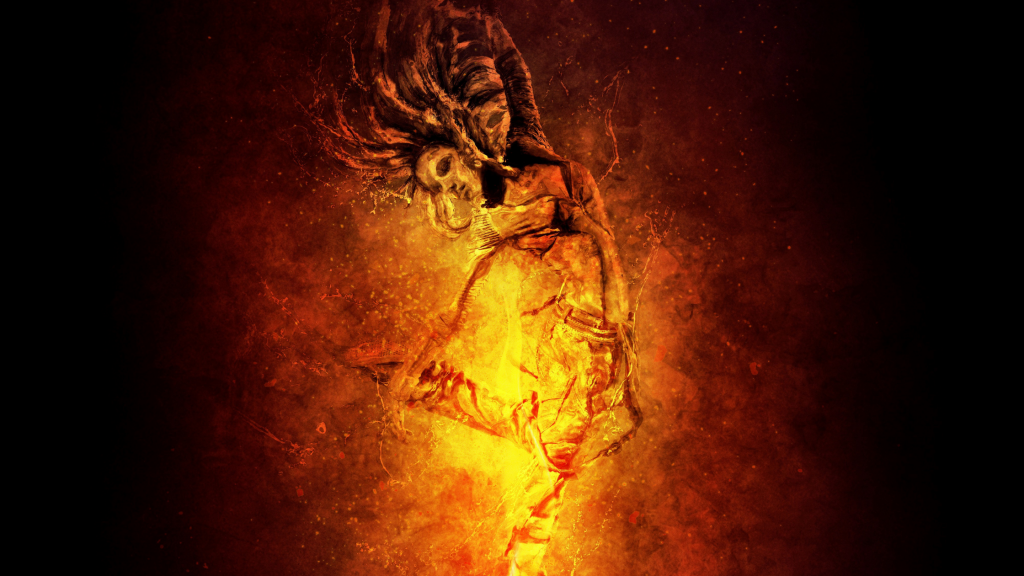When I first learned about Ayurveda, the first thing I did was take a dosha quiz. (And I’m sure that’s the first thing you did, too!)
The dosha quiz revealed that I was a Pitta-Kapha, meaning I have about the same amount of Pitta and Kapha energy in my body composition.
But knowing your dosha isn’t just about self-identity. It’s about knowing how to nurture yourself.
Certain tastes irritate Pitta and Kapha that pacify Vata. The warmth of your food might pacify your Pitta, but irritate someone with more dominant Vata.
Today, we’re diving deep into the Pitta body type and how to balance it (plus maintain it).

Pitta Body Composition: Fire and Water
All three doshas are made of the five elements—fire, water, earth, air, and space.
Nevertheless, each is mainly composed of two elements.
Pitta is primarily made of fire and water elements, and it represents the transformative nature of fire.
It’s characterized as a hot, sharp, light, liquid, spreading, and oily, and its primary function is digestion and transformation.
Pitta is largely liquid in living organisms. That’s why its second dominant element is water.
It’s neither mobile nor stable, but it spreads just like warmth slowly embracing its surroundings or like water flowing down the stream.
Understanding, digestion of food, experiences, sentiments, and judgment are closely related to Pitta. Likewise, governing nutrition and metabolism, the light of understanding, and body temperature.
Physical Characteristics of the Pitta Body Type
Generally, Pittas fit in the medium spectrum both in body type and in weight.
They typically have an athletic physique and warm, radiant, soft skin.
Pittas are also known to be deep sleepers and tend to feel hot easily.
They have good vision, sharp intellect, and tend to be sensitive to the sun.
Want to know if you’re a Pitta body type? Below is a detailed list of the physical characteristics of a Pitta-dominant person.
Face
They have an angular face shape with sharp and strong features. Their face appears triangular or square with a prominent jaw and the cheekbones.
Eyes, Nose, and Lips
Most often than not, Pitta types have a moderate deep-set of eyes.
It’s said that this characteristic makes Pittas good at discerning things and allows them to see through illusions. In proportion to the face and the eyes, Pittas also have a medium-sized nose and nose bridge.
Their lips are also medium—neither chapped nor dry.
Complexion and Skin
Because of the heat within their system, Pittas have a rosy and flushed color. Because of the dosha’s oily nature, they also have oily skin prone to rash and with moderate thickness.
Hair
Pitta-dominant people have a light hair color and are often faster to have gray hair because Pitta burns its color. Although there’s no clear evidence, it’s said that most Pitta dominant men’s baldness is an effect of this dosha.
Bone and Neck
The bone structure, length, and circumference of a Pitta-type are medium. This is also reflected in the neck.
Hands and Nails
The overall look of the hands of a Pitta tends to be square.
The fingers are intermediate, in proportion to the other bones, and the longest finger is about the palm’s same measurement. They also have moderate thick nails that are strong and don’t easily crack.
Body Build
The overall built of a Pitta’s body is also intermediate. They have a well-defined muscle structure that gives an athletic look. and their height is average.
5 Helpful Tips for Balancing the Pitta Body Type
Keeping the doshas balanced is important to live a healthy life.
Since Pitta is of the fire and water elements, this dosha’s slight trigger can lead to a fiery and explosive reaction emotionally, mentally, and physically. Below are five tips for keeping the Pitta at a zero-degree angle.
Tip #1: Keep a rest and play balance
Balancing lighthearted activities with a good amount of rest can help placate an aggravated Pitta.
Do some exercise but avoid overexertion or participating in a highly competitive sport. Some good choices can be yoga, walking in the majestic view of nature, and cycling.
Tip #2: Never skip meals
Because the Pitta dosha is associated with the fire element, Pittas have a strong metabolism.
However, if they start skipping meals, their strong digestive fire can create impurities, which results in hyperacidity. These strong digestive enzymes can be harmful to the body if not taken care of properly.
Tip #3: Nature is the best medicine
Spending time in the arms of nature is relaxing and incredibly therapeutic.
It can be a peaceful walk under the moonlight, a calming stroll in the woods or a cup of tea sipped near a stream. Just set a portion of time to imbibe nature’s wonderful benefits.
Tip #4: Give yourself a daily massage
The abhyanga massage is an amazing way of relieving an irritated pitta.
When done daily, it can promote proper circulation, good sleeping patterns, toning the body’s tissues, and more.
Do a ten to twenty-minute cooling massage using half a cup of warm sunflower or coconut oil. Start massaging from the head down to toes.
Tip #5: Sweet, cooling scents and food
Pittas need something cool to counter its natural fiery nature. Go for sweet and cooling aromas like sandalwood, rose, mint, jasmine, fennel, chamomile, and lavender.
As for foods, focus on sweet, bitter, and astringent tastes—like cucumber, coffee, melons, and cranberries.
4 Telling Signs of an Imbalanced Pitta Body Type
Knowing how to keep Pitta in balance is incredibly important, but what signals does the body show when it’s gone haywire?
First, it’s important to know that pitta has more chances of imbalance than Kapha, but less than Vata.
Imbalanced Pitta is the root of all inflammatory disorders that affect all the body’s organs and tissues.
Pittas may suffer from skin rashes, peptic ulcer, unwarranted body heat, diarrhea, indigestion, and heartburn. Below you’ll see a comprehensive list of all the signs and symptoms caused by an imbalanced pitta dosha.
Here are a few indications that you should watch out for.
The Mind
An imbalance of Pitta dosha can affect the person’s mental state and result in prickliness, impatience, anger, criticism, judgment, and envy.
Excess Pitta can also affect the mind through perfectionism, disconnection, and a general feeling of unhappiness. If left unconstrained, unbalanced Pitta often results in extreme fits of anger, aggression, fury, obsessive-compulsive behaviors, and even depression.
Digestive System
Pitta types have good digestion, but once it becomes unstable, it causes intense hunger, a sense of insatiability, and unquenching thirst.
If Pitta continues to accumulate in the digestive tract, it can lead to nausea, acid reflux, hiccups, vomiting, diarrhea, loose stool, heartburn, low blood sugar, and sensitivity towards spicy/or greasy foods.
You’ll also notice that the tongue has a yellowish coating, lingering bitter or sour taste, and foul-smelling breath.
The feces may have a greenish or yellowish color with a sour smell, and during the process of elimination, there’s a burning sensation.
In extreme cases of excessive amounts of pitta in the digestive system, it can result in severe acid indigestion or heartburn, terrible diarrhea, blood in the stool, inflammation in the stomach or esophagus, peptic ulcer, and appendicitis.
Skin, Sweat, and Blood
In the skin, excess Pitta can appear to have a red or yellowish color and can be hot once you touch it.
The more visible effects are hives, dermatitis, eczema, rash, acne, and psoriasis.
Since unbalanced Pitta causes excess heat in the blood, it can also result in hot flashes, fever, bleeding inclinations, burning or itching sensation, hemorrhoids, and hematomas.
People with unchecked Pitta tend to bruise easily and are extremely sensitive to sun exposure.
In the mouth, you can see that the tongue may look red or swollen, as well as bleeding gums, mouth ulcers, or canker sores.
There’s also an excessive amount of sweating, acidic perspiration, and a strong-smelling body odor. Extreme cases of Pitta imbalance seen in this area are visible capillary networks, hemorrhage, jaundice, hepatitis, serious bleeding disorders, abscess, melanoma, lupus, gangrene, blood clots, stroke, mononucleosis, stroke, and myeloid leukemia.
Other Parts of the Body
In other parts of the body, Pitta imbalance manifests as bloodshot, irritated or burning eyes, extreme light sensitivity, and a slightly yellowish color in the eye.
Tendonitis, muscle fatigue, bursitis, mild headaches, hair loss, and sporadic high blood pressure are also caused by excessive Pitta.
Other symptoms of an unwarranted amount of Pitta are dizziness, insomnia, shingles, yellow urine, herpes outbreak, premenstrual irritation, prostatitis, heavy or painful menstrual discharge.
If left untreated, unstable Pitta can lead to poor vision or blindness, fibromyalgia, gout, chronic hypertension, inflammatory arthritis, bladder and kidney infection, adrenal exhaustion, hypothyroidism, fainting, migraines, chronic fatigue syndrome, autoimmunity disorder, encephalitis, and multiple sclerosis.
In men, excess Pitta can lead to the epididymis and inflammation of the penis. On the other hand, in women, excess Pitta can result in inflamed endometrium and other reproductive tissues.
It’s important to keep your Pitta body type in balance because it can result in many serious diseases and painful reactions.
Try doing the tips mentioned above and keep an eye on the things that clash with the dosha’s fire and water elements.
At the end of the day, Pitta-dominant people have a lot of astounding features and qualities. Just make sure to live a healthy lifestyle.

